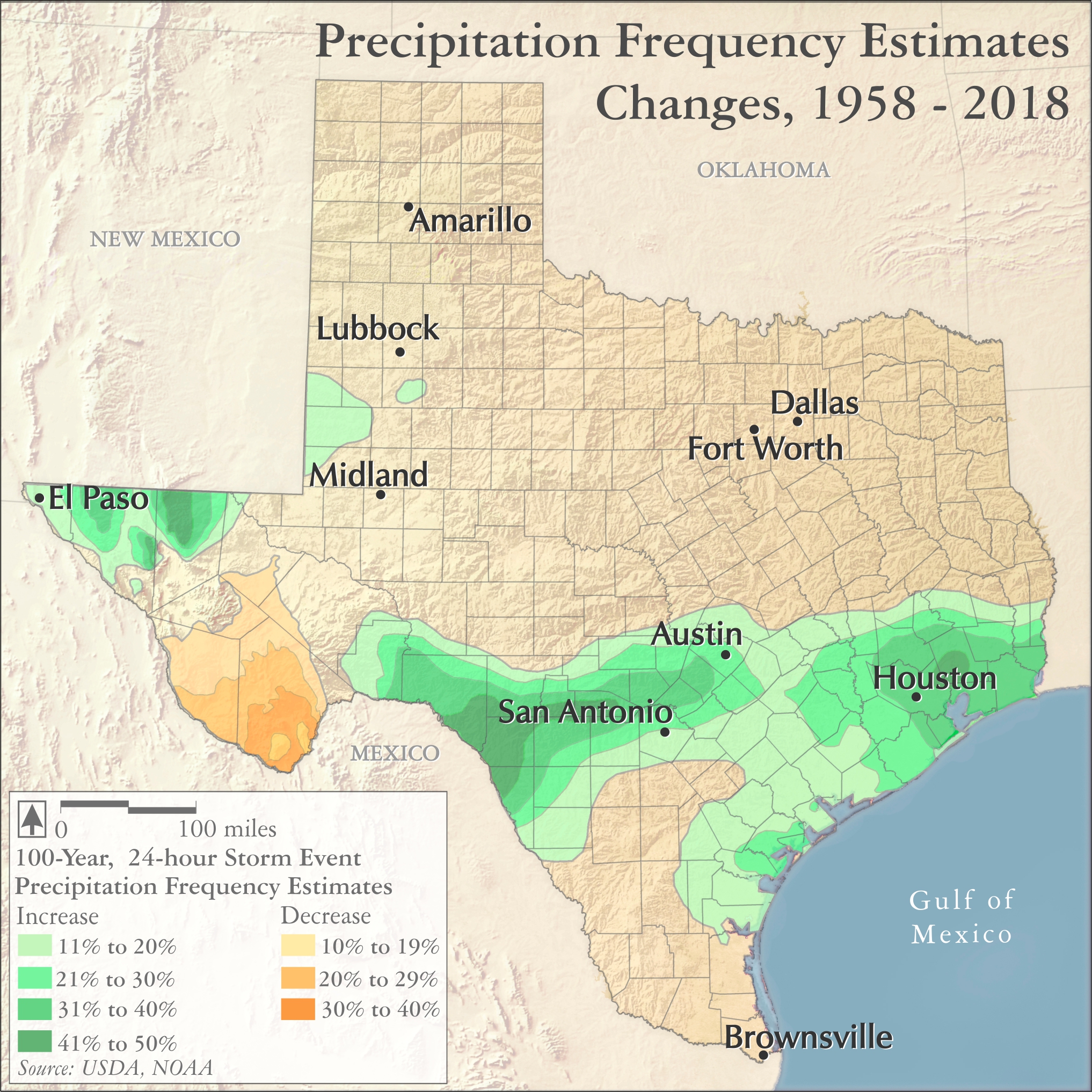
Precipitation Changes
We are used to the weather changing from day to day: one moment sunny, the next cloudy, the next perhaps a sprinkle.
With climate change, however, large-scale, long-term shifts are afoot. Some of us may have had an intuitive sense that the climate was transforming. Hurricane Harvey’s 60 inches of rain (with 300,000 structures inundated, 500,000 cars flooded, and 40,000 people displaced to shelters) is something new. In fact, these extremes may be the new normal.
The federal government has confirmed these suspicions with its recent “Atlas 14” update on rainfall frequency data. NOAA has revised its rainfall estimates using new data, relying on records running through 2018, rather than the earlier “TP-40” calculations that depended on rainfall reports through 1958.
In many Texas towns, projected rainfall is becoming more severe. As this map shows, the Atlas 14 estimates for a 100-year, 24-hour storm in Houston may jump more than 50%, from 13” to 19”. In rough terms, 500-year storms in Houston and Austin are now expected to recur every 100 years, while 100-year storms are now viewed as 25-year storms.
Meanwhile, in other parts of the state, such as the Trans Pecos, rainfall intensity will be declining, in some cases by as much as 40%.
In sum, the future will not be like the past. Indeed, the years to come may be so different that it will be hard to extrapolate out from the historic rainfall records to estimate what may be coming.
Sources:
Hershfield, David. 1961. Rainfall Frequency Atlas of the United States for Durations from 30 Minutes to 24 Hours and Return Periods from 1 to 100 Years. Cooperative Studies Section, Hydrologic Services Division, Soil Conservation Service, U.S. Department of Agriculture, U.S. Department of Commerce. Technical Paper 40. Washington, D.C., p. 56.
Kennedy, Merrit. 2018. “Harvey the ‘Most Significant Tropical Cyclone Rainfall Event in U.S. History”. NPR. January 25, 2018.
Perica, Sanja, Sandra Pavlovic, Michael St. Laurent, Carl Trypaluk, Dale Unruh, Orlan Wilhite. 2018. NOAA Atlas 14: Precipitation-Frequency Atlas of the United States, Volume 11, Version 2.0: Texas. National Weather Service, National Oceanic and Atmospheric Administration, U.S. Department of Commerce. Silver Spring, Maryland, Figure 7.4, p. 40.
